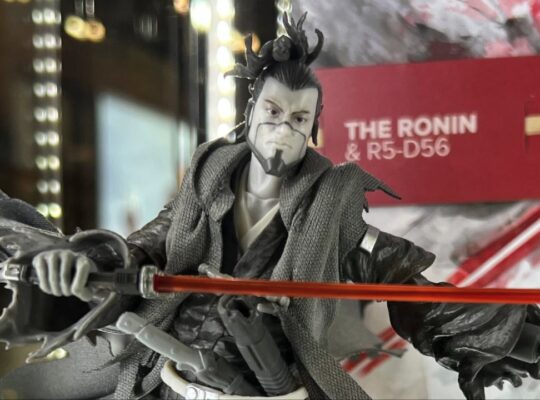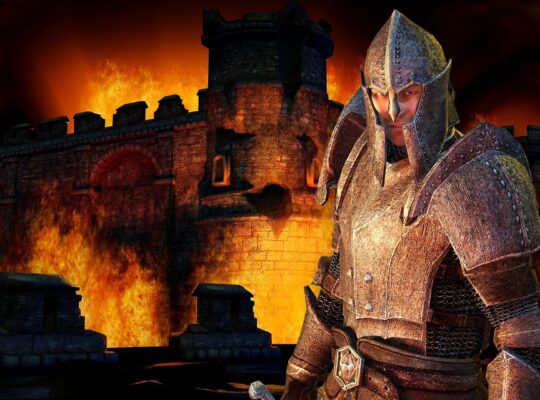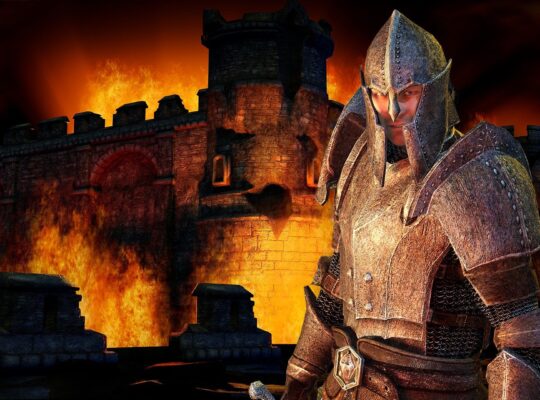
The Turtle Beach VelocityOne Race wheel and pedal set, which arrived around this time last year, wouldn’t necessarily be my first suggestion to eager racers looking to buy an entry-level direct drive racing wheel set-up for PC and Xbox. It is, however, a robust, all-inclusive bundle that comes with a 7.2Mn direct drive wheel and a three-pedal set WITH a load-cell brake. That combo, and a load-cell brake? That’s good value, right out of the box; no additional purchases necessary.
That said, a year later, one such additional purchase has arrived, in the form of the VelocityOne Multi-Shift – an add-on shifter module that can function in H-pattern mode, sequential mode, and even as a handbrake. Whether you’re looking to augment your Xbox VelocityOne set-up – or simply looking for a standalone PC shifter – it makes a strong case for being the shifter of choice at its price point thanks to its satisfying shift feel and its range of available settings.
Turtle Beach VelocityOne Multi-Shift – Design and Features
The VelocityOne Multi-Shift can be hard-mounted to bespoke sim rigs (mounting screws are provided in the box), but it also contains an integrated table clamp for racers with desk set-ups (or otherwise custom racing seat solutions without dedicated mounting points). The metal table clamp is firm, and tightens via an allen bolt hidden beneath a small flap in the faux carbon fibre faceplate of the unit’s base. It can accommodate surfaces up to 50mm thick, which is good if your desk or tabletop is particularly chunky. It’s an elegant and space-saving clamping solution; it’s hidden yet sturdy, and I like it more than the Thrustmaster TH8A – which essentially just has a large G-clamp attached to the base. If you’re tossing up between the Multi-Shift and the Moza HGP Shifter, consider that the latter requires a separate table clamp accessory for an additional cost.
The Multi-Shift is a good-looking unit overall. The carbon fibre-inspired faceplate brings it in line with those same accents on the VelocityOne Race wheel, the housing is understated with minimal branding, and the leather-look boot finishes it off nicely. Overall it’s the scale I find most pleasing; with the longer of the supplied shafts, it’s the first shifter of its kind that I’ve found actually feels like-for-like (in size terms) to my actual car. Logitech’s Driving Force Shifter, in particular, feels like a tiny toy in comparison.
On that note, however, know that the bespoke H-pattern knob does not come off the short shaft it comes out of the box with – despite images on Turtle Beach’s website displaying it overtly removed. The H-pattern knob comes factory aligned and tightened to the short shaft, so can’t be unscrewed and actually placed on the long shaft. For this reason the Multi-Shift does come with a second short shaft, for those of you who are interested in using your own gear knob. The thread size is M12x1.75, which is a typical automotive size. It won’t fit every knob by default but, like any real car, it will only require a standard adapter to do so.
The sequential knob comes off the long shaft easily, but I’ve just been using it regardless of whether the unit is in H-pattern mode or sequential mode. It has the superior feel by far as it’s larger and heavier. Putting the H-pattern knob on is not at all a necessity; besides, needing the numbers written on the gear knob to use it is a little like needing the letters on a piano to play it. If you’re still at that point you might be better served sticking to automatic.
A manual switch on the side of the unit instantly toggles the Multi-Shift from H-pattern to sequential. It’s a process that essentially takes one second. The shifter I’ve previously used most – the Thrustmaster TH8A – can also be switched from H-pattern to sequential, but that’s a process that involves manually removing the faceplate and replacing it with the dedicated sequential version that holds the gear shaft in the centre. That’s a task that requires an allen key and takes several minutes; longer still if your son has “misplaced” the second faceplate in his room, beneath the large pile of cords that have steadily vanished from my office over the past 12 months.
Two further electronic switches on the top of the unit are the high and low range gear option, and the handbrake option. The high/low button is designed for heavy vehicle simulation, allowing you to use gears 1 through to 7, then hit the button and go back through the gates as gears 8 through to 14. The handbrake button turns the Multi-Shift into an analogue handbrake when in sequential mode.
The Multi-Shift doesn’t feature any proprietary cables, and connects straight to the VelocityOne Race wheelbase via a short USB-C to USB-C cable, or directly to your PC via a generously long (2.5 meter) USB-C to USB-A cable. The recess for the USB-C connection on the Multi-Shift unit is nice and deep and the cable fitting sits in really snugly, so it shouldn’t be susceptible to damage from bumps or tugs.
Turtle Beach VelocityOne Multi-Shift – Performance
The Multi-Shift is easily at its strongest as an H-pattern shifter. I’m really happy with the feel of it, and it’s been working well for me. With the long shaft (about 12 centimetres, excluding the threads) and the heavier knob (intended as the sequential and handbrake knob but, as I mentioned, I’m using it for all purposes) it feels great to use. The action is firm and has a satisfying, two-stage clunk to changes, and there’s no sloppiness while it’s in gear. If you prefer a shorter throw, the shaft can be unscrewed and changed in about 20 seconds
Seventh gear (and reverse) are reached by pushing down on the shifter and pulling right. I do feel the shifter sag a little under the weight of my hand, so I was a little concerned that shifting from fourth to fifth (or from fifth to sixth and back again) might be a bit annoying if it let me accidentally grab seventh instead – or mash up against the gate. That’s never been the case, though; activating seventh and reverse requires quite a firm push down, so it’s not something I’ll do by accident. I haven’t had any problems downshifting from seventh to sixth, either; pulling the shifter out of seventh without any downward pressure instantly and effectively locks out reverse. Outside of heavy vehicle sims it’s not a shift you’d do much anyway, since sports cars with 7-speed manual transmissions are rarer than rocking horse crap.
As a sequential shifter, it’s okay. The return-to-centre action is strong and reliable. It does, however, have a fair bit of left and right wiggle in the neutral position – so there’s a bit of a soggier feel to it than you’d get in an actual sequential system. Handbrake mode is functional, but it feels the least realistic, because it unavoidably feels like you’re just changing a gear rather than pulling on a progressive brake. That said, as a lover of rally games, having an admittedly imperfect handbrake I can yank to lock the rears – rather than constantly needing to map a handbrake to the face of the steering wheel rim itself – is much better than nothing. I wouldn’t recommend the Multi-Shift for anyone looking to exclusively use it as a handbrake, but it’s still a great option to have in an entry-level shifter product.















